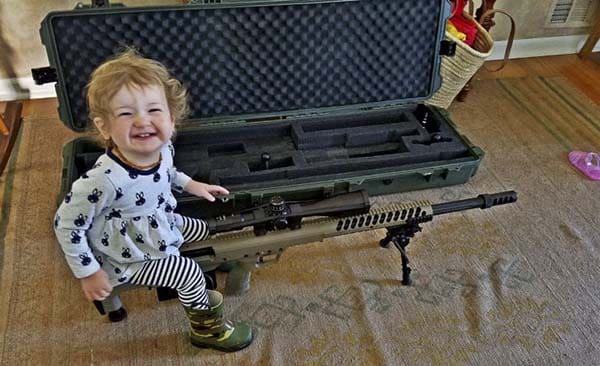
The world comes back into focus; time has started up again. A Desert Tech HTI in .50 BMG is in my hands, and, oh yes, that’s right, I must have just fired it. I’ve been abused by a 20-pound, bolt-action, bullpup rifle spitting out 12,144 ft-lbs of muzzle energy, but with another half-inch projectile going through the same hole downrange I gladly rack the bolt and look forward to stopping time again.
This thing is a beast. It combines raw power, high precision, and an engineer’s dreams. It’s packing a 29″ barrel into a package that ends up a full foot shorter than a Barrett M107 and weighs 9 lbs less. Despite its bullpup configuration, it sports a spectacular trigger.
As the Desert Tech HTI isn’t familiar to most folks and crams a lot of impressive features into its chassis, the full review video went a bit longer — 26 min — than most. But if you want to see it fired, want to see frozen watermelons, cinder blocks, bowling balls, spray paint cans, ballistics gelatin, IIIA body armor, and steel plates at 330 yards get hit by .50 BMG fire (and some .375 Cheytac), we’ve got you covered. The review below effectively encompasses the first 8 minutes of the video.
Let’s go in for a closer look at the HTI, moving back-to-front. A relatively thin, rubber buttpad graces the rear. Despite its unimpressive size it does seem to work effectively, feeling soft when squished by over 12,000 ft-lbs. The extra pad height above the stock comes in handy when shooting prone, in particular.
The HTI’s bolt telescopes to fit in the small space behind the breech while also fully covering the breech when in battery. In the photo above, the bolt is fully extended in the left pic and fully compressed in the right. HTI bolts for smaller calibers, such as .375 Cheytac, don’t compress as much as this .50 BMG bolt, shortening the travel distance to only what’s necessary for the cartridge length.
On top of the chassis just in front of the buttpad is a release catch. Pull forwards on it and the buttpad is free to rotate to the left or to the right, allowing the bolt to slide straight out the rear.
There’s a QD socket integrated into each side of the buttstock as well a nice, straight hook at bottom rear for bracing while shooting from a rested position. An easily-adjustable monopod is built into that hook. Pull down on the collar and the monopod’s foot shoots out under spring pressure (not shown above, but demonstrated in the video), locking into place when the collar is released. This instantly handles your gross adjustment. Then, rotating the collar provides fine adjustment via threads in the buttstock. With the two adjustment methods combined, the darn thing will give you a good 5 inches of lift.
An adjustable cheek riser is available for creating the perfect cheek weld match to your optic. In most cases, though, with an optic mounted more or less as low as possible — typically the goal on a rifle like this — the cheek riser is best left all the way down.
The HTI’s magazine release is an aluminum paddle at the rear of the magazine well, accessible equally well from either side of the gun.
Desert Tech’s bolt knobs are threaded on, rather than machined as an integral part of the bolt handle. Obviously this makes replacement, should you want to customize, significantly easier. Seen above is the bolt fully in battery, locked to its fully-extended length.
With the bolt back, the beginning of the barrel can be seen inside of the chassis. Two rows of locking lugs ensure solid lockup. Out of the rifle, the huge steel barrel really feels like an impressive piece of artillery.
Tell you what, it sure fills up a suitcase! Not a peep from the TSA, either.
A half inch of bore diameter made for some cool views. It was also handy when first sighting in the rifle — slide the bolt out the rear, which provides an unobstructed view right down the bore, use the monopod to finely adjust until bore-sighted on target, then run the scope turrets until it’s lined up in approximately the same place. I was on-paper at 100 yards with the first shot.
Moving forwards we get to the barrel bolts, safety slider, and trigger. Mirrored on both sides, the safety is easily activated with the trigger finger of either hand. Snick it forwards for “fire,” and back for “safe.”
By turning each of those 4 barrel bolts just 180° counter-clockwise and doing the same to a lock/unlock bolt just behind them, the barrel is ready to slide out the front of the chassis. Literally, it’s now free and it pulls right out the front. This is handy for transport, as it shortens the rifle by about a foot, but the barrel can also be replaced with one in a different caliber. Options include .50 BMG, .416 Barrett, .408 Cheytac, and .375 Cheytac, all in 29″ length.
When it’s time to reinstall the barrel, the process is very simple. Slide it in the front until it slots in place in the chassis, which is easy to feel when it happens. Insert the bolt and lock it into battery, setting the headspacing and locking the barrel right where it should be. Then, using the included torque wrench pre-set to 80 inch-pounds, tighten down the 4 bolts front-to-rear and return the lock tumbler bolt to the locked position. The whole process can be done in well under a minute.
Desert Tech claims no point of impact shift at all, and we put that to the test a little later in the review.
As mentioned earlier, the trigger in the HTI is spectacular. And I don’t mean “for a bullpup,” I mean period. It’s adjustable for travel, creep, location (distance from the grip to the trigger shoe), and break weight within a 1- to 3-lb range. I didn’t mess with my example at all, and you can see from the Dvorak TriggerScan graph above just how great it feels. Break weight is a paltry ~1.34 lbs, and it travels just 40 thousandths of an inch from first touch to extremely crisp, clean break. Without a question, it’s a trigger befitting a high-precision, long-range rifle.
Forward of the trigger guard is a grip area. It’s a handy place to hold when firing offhand or from a kneeling position, and is close enough to the gun’s center of balance that it works well for carrying it.
The free-floated handguard has 6 QD sockets and a bunch of threaded holes on the sides and bottom. Those holes can be used to mount rail sections for bipods and other accessories.
At the business end is a very effective muzzle brake. A thread protector at its base covers the mounting threads for a suppressor, such as one of Desert Tech’s own.
The whole package is purposeful and well-designed, cramming a lot of functionality into one of the smallest .50 BMG rifles out there.
While the HTI is extremely lightweight and compact for a .50 cal, it’s still a big gun. Throw the rifle into a wheeled Pelican case with spare barrel, bolt, and magazine in a second caliber, plus optic, bipod, and torque wrench, and you’re pushing over 50 lbs.
On The Range
Features and function covered, let’s skip to the fun stuff.
Desert Tech took this HTI off their NRA Show booth wall and shipped it my way more or less immediately, I’d say, considering there was still no firing pin in the .50 cal bolt. I braced myself behind the rifle, prepared for some punishment, and…CLICK. Big exhale. Upon closer inspection I realized what had happened and, with a little relief at the indefinite delay of my self-flagellation, swapped the barrel, bolt, and magazine out for the .375 Cheytac ones.
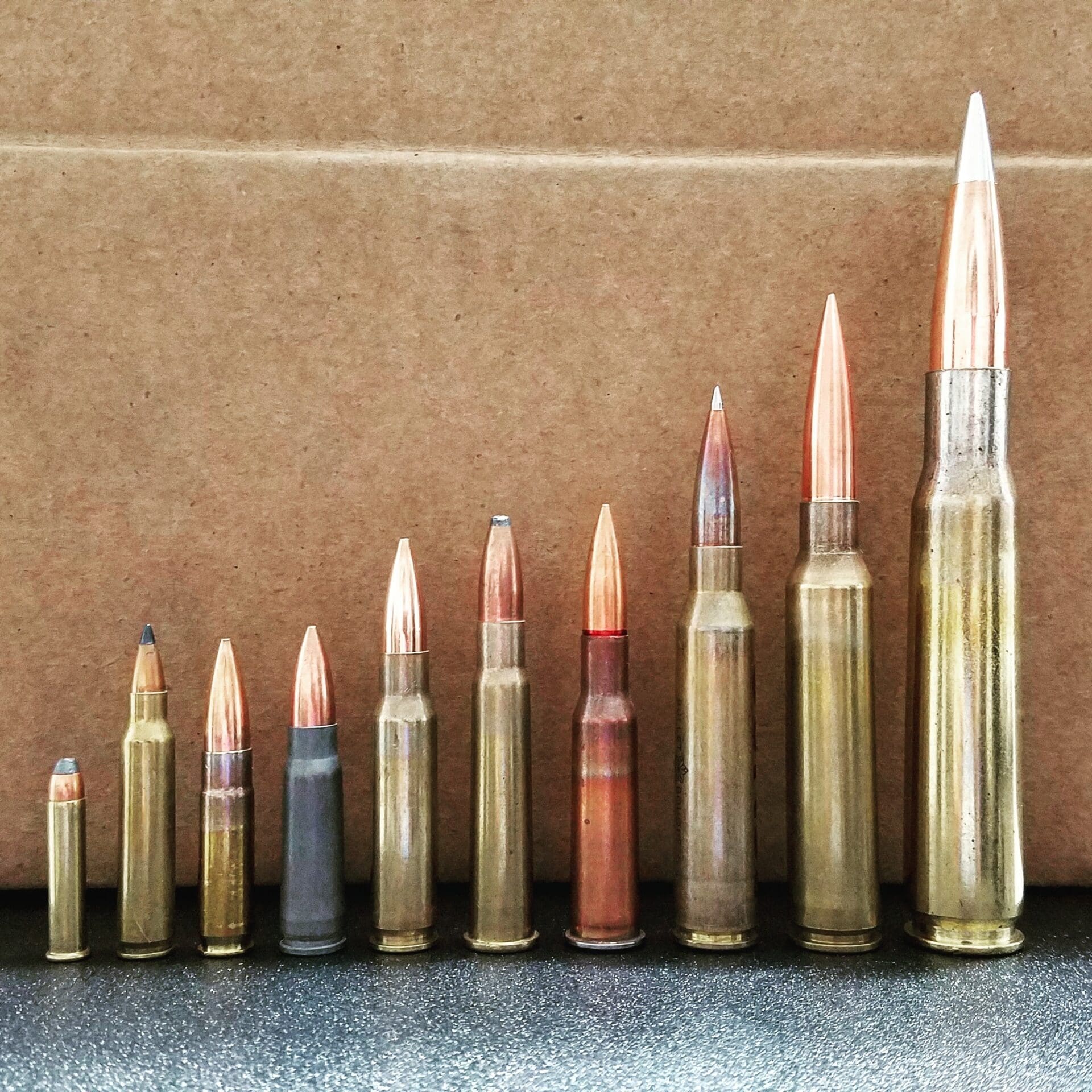
Pushing 7,417 ft-lbs of muzzle energy, Desert Tech’s .375 C load isn’t exactly a pussycat. While it’s often billed as a soft-shooting alternative to many of the other extreme-long-range calibers, it’s definitely a serious cartridge. Right-to-left in the photo above, that’s .50 BMG, .375 C, then a .338 Lapua Magnum. Your typical .338 LM’s putting out about 4,950 ft-lbs, so .375 C steps up the energy by just a hair under 50%.
I mention this because I was, at first, surprised by the recoil. Clearly I shouldn’t have been, but after all the chatter I’d seen of it being “soft-shooting” and it looking so small next to the .50 BMG this gun was designed to shoot, it caught me a little off guard. It has a relatively quick, sharp recoil impulse and the muzzle brake makes itself known. After the first shot I braced myself a bit better, knew what to expect, and stood up to those punches without much complaint.
However, I’ll man up and admit it psyched me out a bit for the .50 BMG. Same bolt gun, same weight (or near as dammit), but almost 64% more energy. This is exactly why I tried to shoot the .50 first.
Fast forward a few weeks and the firing pin is installed. It’s a hot day in the woods of N’Idaho and I’ve found 100 yards of clear path through the trees, but I have to shoot off a folding table for line of sight to the target. Kneeling on the ground behind the table, leaning into the rifle with the help of a shooting mat holding the bipod in place, excuses gone, I trip the trigger.
Oh, that light, clean, crisp trigger. I feel like I have the fundamentals down pretty darn solid, but with the anticipation of what’s coming at the end of the trigger pull it’s unquestionable that the quality of the HTI’s trigger was crucial in my ability to shoot tight groups with this rifle.
Of course, I can’t say I felt the trigger break on that first shot. Or on most of the .50 cal shots, for that matter. Everything is normal, the day is nice, the birds are singing, then the world ends. But just for a fraction of a second. That wasn’t a bomb going off; that was supposed to happen. There’s a hole in the paper 100 yards away, and no new holes where they shouldn’t be. The birds, though, have left the zip code.
Surprisingly, my shoulder’s fine. The muzzle brake, for all its blast and concussion, seems to be highly effective, plus .50 BMG in this rifle produces more like a solid, long push than a sharp hit. Think the push of .45 ACP vs. the snap of .40 S&W, but scaled up 32x in energy and 2.6x in pressure. You don’t want scope bite from this thing.
Interestingly enough, it’s enjoyable to shoot. From a standing or kneeling position in particular, the recoil becomes a non-issue. Your body moves with that push. I could shoot it all day like that, effects of the concussion aside. Attempting to really brace the HTI on a shooting bench, though, and it’s very apparent that it’s stronger than me. It kicks me around but good.
That feeling of a momentary lapse in time — a solid rattle and shock to the system that resets the computer — was corroborated by three other shooters, especially when shooting from a bench. After a box of ammo I seemed to have built up an immunity…or lost those brain cells. Among those who shot it we suffered zero detached retinas, zero broken collar bones, and zero scope bite incidents. Nothing worse than mild bruising from the buttpad trying to achieve low earth orbit and you, dear reader, being subjected to my whining.
Finally, though, I understand why .375 Cheytac is “soft-shooting.” Switching back to it after sending 10 rounds of .50 downrange, it was a pussycat. I gladly popped off .375s at the steel, from the bench, feeling like I could shoot it all day — though my wallet can’t back up my mouth on that one.
Through all the testing, including the ever-important “sun’s out guns out” jet ski test, the HTI ran great. Bolt lift on the .50 is pretty stiff, as you’re cocking a heavy firing pin spring, but everything else was smooth and precise. Did I mention that the trigger is exceptional?
Accuracy
Three shots at 100 yards clocked in at 0.549 MOA. Desert Tech claims their guns can shoot half-MOA, and they’re right.
Adding two more shots to meet TTAG’s standard of 5-shot groups, which often open things up significantly vs. 3-shot groups, we’re still very solidly sub-MOA with a 0.734″ or 0.701 MOA group at 100 yards.
Running low on Desert Tech’s own match-grade ammo, I still needed to test for POI shift. To do this, the barrel was installed per correct procedure, and two shots were fired at a target 220 yards away. It’s actually too bad I didn’t try to turn this into a 3-shot group, as those two shots were just 0.303 MOA apart. The barrel was then removed and reinstalled, and another two shots were fired. Those two strung vertically (as much as 0.438 MOA can be called “stringing”) instead of horizontally, which I thought was a bit interesting, and the center of that group was 0.703 MOA higher than that of the first group.
I admit that 2-round “groups” is falling a bit short of scientifically-conclusive evidence here, but I was shooting quite well that day and feel relatively confident that there is, in fact, some amount of POI shift. While the 0.7 MOA I came up with here is no big deal for most use out to a few hundred yards (e.g. it’s a ~4″ shift at 600 yards), it becomes real distance when the range gets stretched out to the HTI’s potential.
While I didn’t shoot for groups with the American Eagle or PMC Bronze .50 BMG I purchased, I was right on target at various ranges out to 330 yards with them as well.
Unfortunately, the .375 Cheytac setup just wasn’t performing for me. To be fair, I shot it as I received it — no cleaning — and tried only Desert Tech’s own .375 ammo through it. As the HTI is advertised to meet half-MOA accuracy in this caliber, too, the results were well off expectations. The 1.751 MOA target above was my first attempt at 100 yards.
The second group was slightly better at 1.512 MOA, but we’re still well above what it should be capable of. I do believe DT’s half-MOA assertion is with 3-round groups, but the best possible result in that group above (measuring the three holes closest to each other) is about 0.78 MOA.
Now, I didn’t have the owner’s manual originally and those first two .375 Cheytac groups were shot with a barrel that wasn’t installed via the correct process. Thinking this may explain the accuracy issue, I later shot a 3-round group at 220 yards. The resulting 1.696 MOA group seen above, though, wasn’t an improvement. For what it’s worth, this was shot on the same day in the same conditions as the .50 BMG POI shift target.
Of course, in the grand scheme of things this is not “poor” accuracy. As you’ll see in the video, there were no issues hitting a small gong (either 6″ or 9″ diameter) at 330 yards — we went 4 for 4 on it. I’ve heard that some calibers “settle down” after a certain distance and can be “more accurate” at long range than at short range. This was often said of the .303 British out of the Lee Enfield, if I recall correctly. I’m not sure I fully believe that group size in MOA may have been smaller at longer ranges — not that anyone’s pushing that story, although I have seen accounts of .375 C shooters saying they zero at 500 yards, not 100, in some part due to “inconsistent results” at 100 — and unfortunately I was limited in my testing this time around to shooting for groups at only 220 yards. So, if you’re a believer in this theory, I got nothin’ for ya. The .50 grouped for me while the .375 didn’t.
Conclusions
Desert Tech’s HTI is easily one of the lightest, most compact .50 BMG rifles ever made. Its bullpup configuration comes at no expense to trigger quality or ergonomics. In fact, its center of balance is excellent — an improvement over the norm.
Of course, it’s hard to argue with the .50 BMG, and pulling the trigger provides a sure reminder of that. Your unsuspecting neighbor on the shooting line may brown their pants, but I think you’re guaranteed to have a blast. There’s enough recoil to make you feel alive — once you remember where you are and what you’re doing there — and there’s no denying the satisfaction of single-hole groups. .375 Cheytac performance here notwithstanding.
Fit, finish, and overall quality is very high. The HTI definitely represents a significant investment, but the ability to shoot four calibers in the same chassis helps the value proposition. I only wish I could have shot at and even well beyond 1,000 yards in my testing, especially with the .375, whose 352 grain pill is still supersonic past 2,100+ yards. Next time.
Specifications: Desert Tech HTI
Caliber: .50 BMG and .375 Cheytac tested (.416 Barrett and .408 Cheytac also available)
Capacity: 5+1
Weight: 20.05 lbs in .50 BMG, 19.7 lbs in .375 Cheytac
Length: 45.37″ in .50 BMG, 44.37″ in .375 Cheytac (shorter muzzle brake)
Trigger Pull: User-adjustable from 1 lb to 3 lbs, plus adjustment for travel, creep, and location
Action: Bolt action, magazine-fed
Barrel: 29″ length, 1:15″ twist in .50 BMG, 1:10.5″ twist in .375 Cheytac
Price: $7,595 MSRP for chassis ($5,095) plus .50 BMG caliber kit ($2,500). .375 Cheytac caliber kit is $2,400.
Ratings (out of five stars):
Accuracy: * * * *
The .50 Browning Machine Gun cartridge was designed for laying down full-auto fire, not for precision shooting at long range. Desert Tech has done a heck of a job creating a rifle that’s fully capable of firing .50 BMG at half-MOA. I’m not sure what was going on with my .375 Cheytac setup. Most people zero this caliber at 500 yards. I’ve seen some mention erratic results trying to zero at 100. It’s possible that it does actually have to “settle down” and my shooting for groups at 100 and 220 yards was simply too close.
Ergonomics: * * * * *
The balance and size of the bullpup configuration are awesome. Length of pull was spot-on for me, but 1/2″ spacers can be used to suit different shooters. With the adjustable cheek riser, adjustable trigger, and threaded-on bolt knob it can all be changed to suit. The safety is right where it should be. It would be easier to run the bolt were it farther forwards — were it a standard rifle rather than a bullpup — but that doesn’t mean it’s difficult on the HTI. Although the pistol grip fit my hand perfectly, if the rifle were designed to accept AR grips instead it would ensure proper ergos for most anyone.
Reliability: * * * * *
Granted I personally ran only 45 rounds of .50 BMG and 20 rounds of .375 Cheytac through this HTI, but it functioned smoothly and flawlessly and I see no reason to doubt it would continue doing that long-term.
Customize This: * * * * *
Although there isn’t exactly aftermarket support for the HTI, it offers a significant amount of built-in customization ability. As previously mentioned, length of pull, trigger, and cheek riser are all adjustable and the bolt knob is easily-replaced. Rail sections can be placed all over the handguard, and the top rail is plenty long for optics of all sorts. The muzzle brake is a QD mount for a suppressor, and perhaps most importantly the HTI can switch between four calibers in a matter of seconds. Again, perhaps its only real area for improvement would be a swappable pistol grip.
Overall: * * * *
A star has been dropped due to the .375 C accuracy, although I’m anticipating assertions in the comments below that I’ve simply tested it at too short a distance. Without this sore point, it would be a 5-star rifle…notwithstanding the fact that I can’t afford one. It’s a .50 BMG tack driver in the lightest, most compact package of its kind. While a bolt-action rifle can’t hide you from the thump of this caliber, the rifle seems to mitigate it about as much as possible and it wasn’t as bad as I had feared.

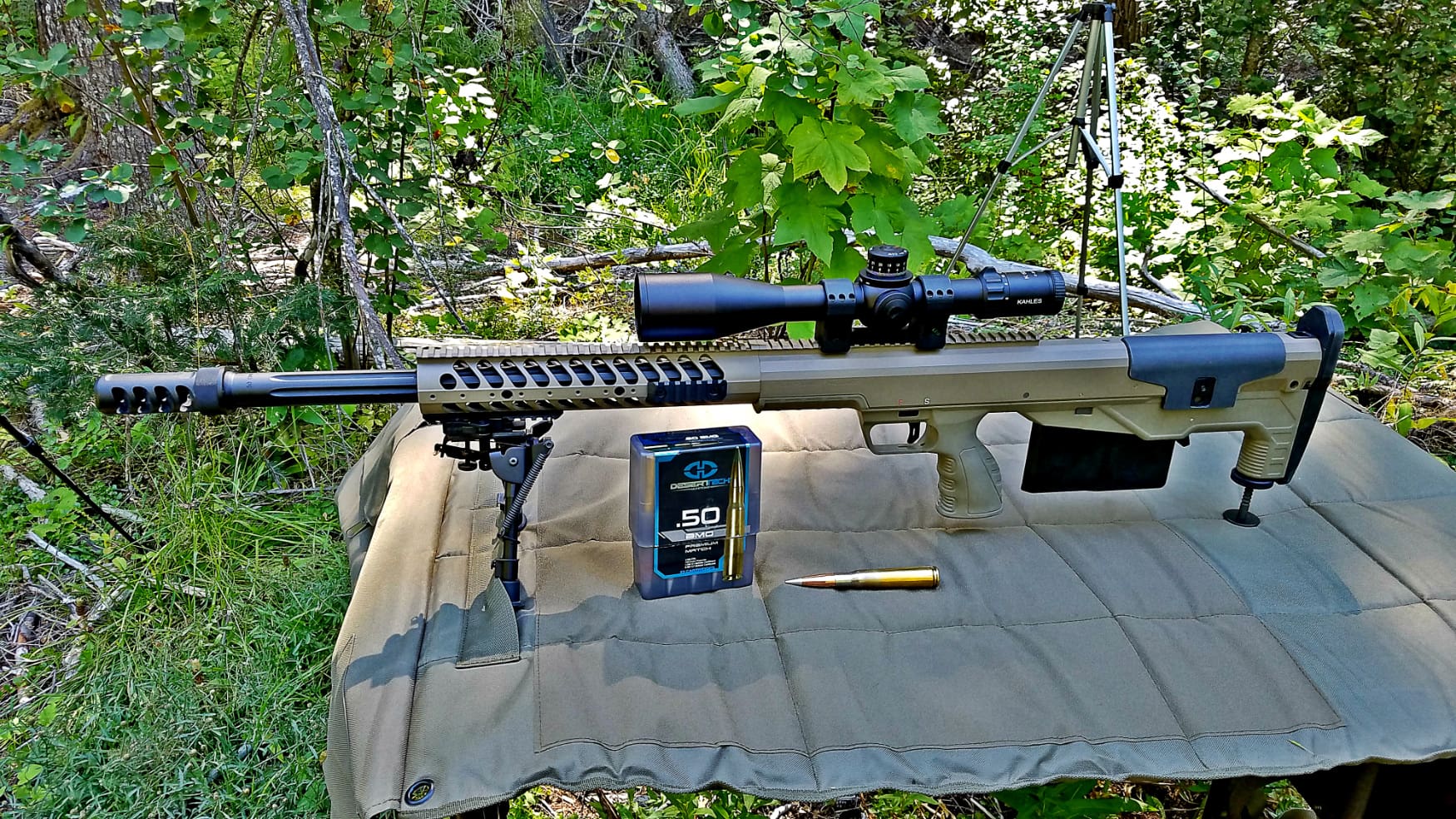
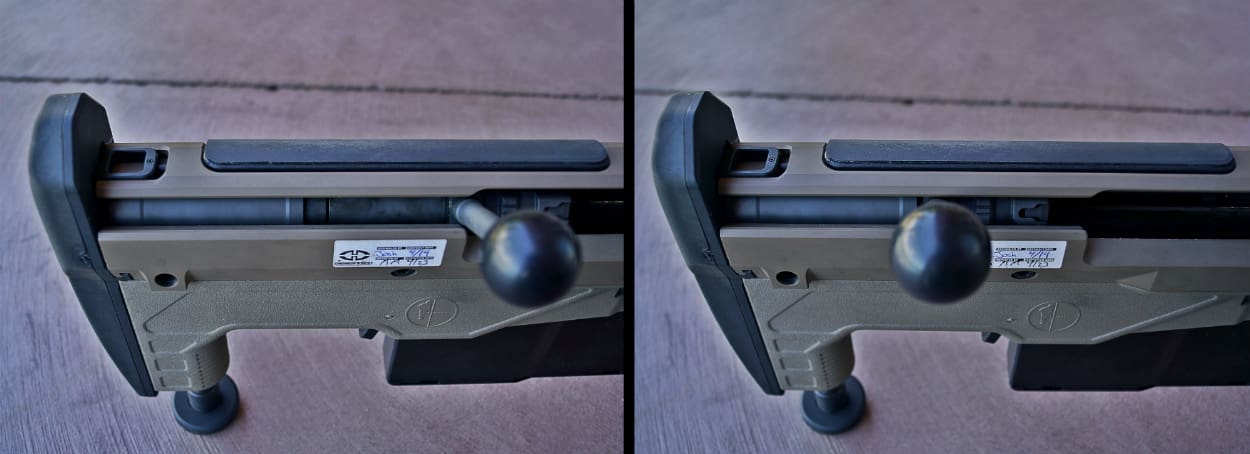
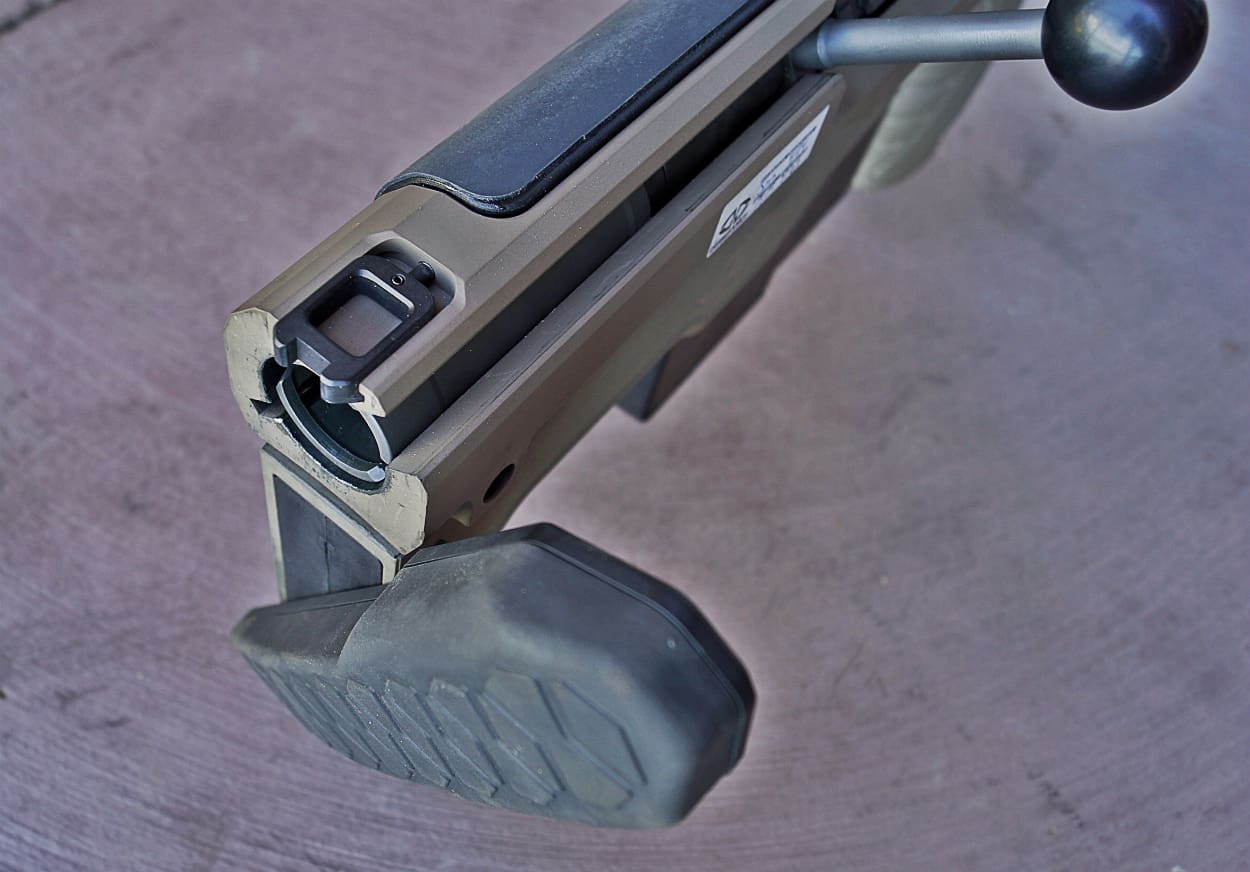
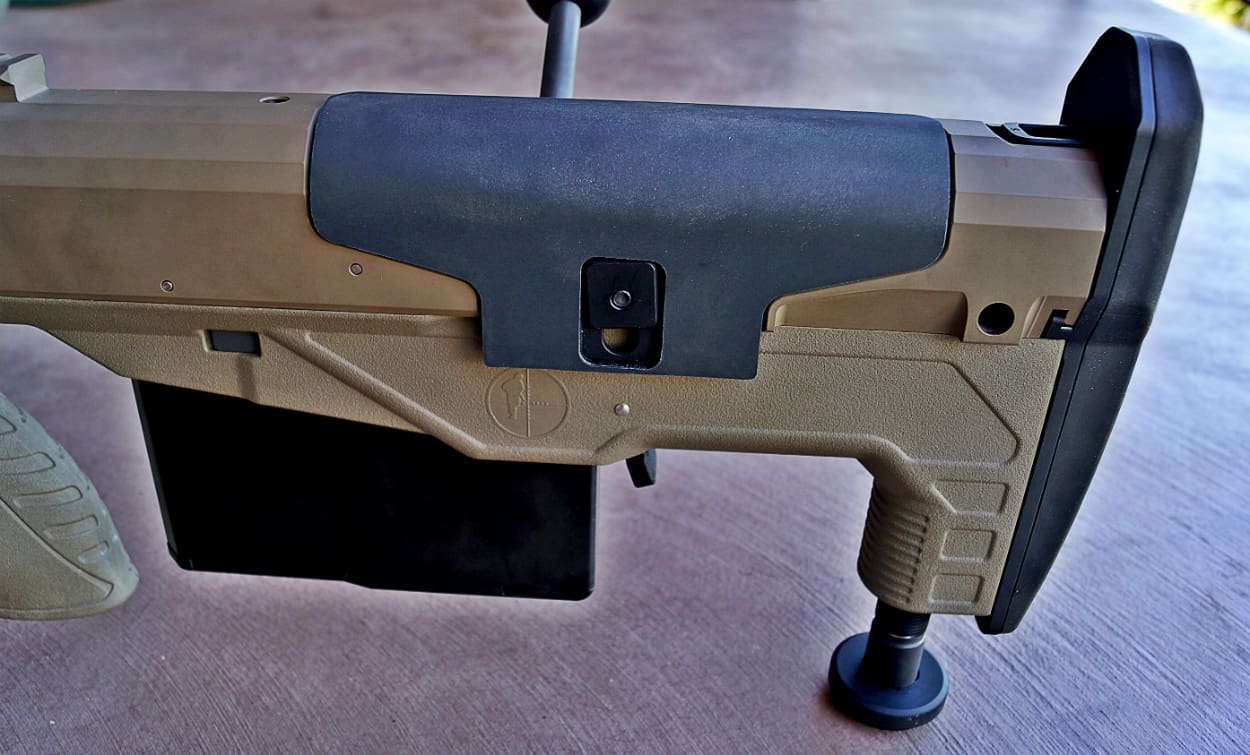
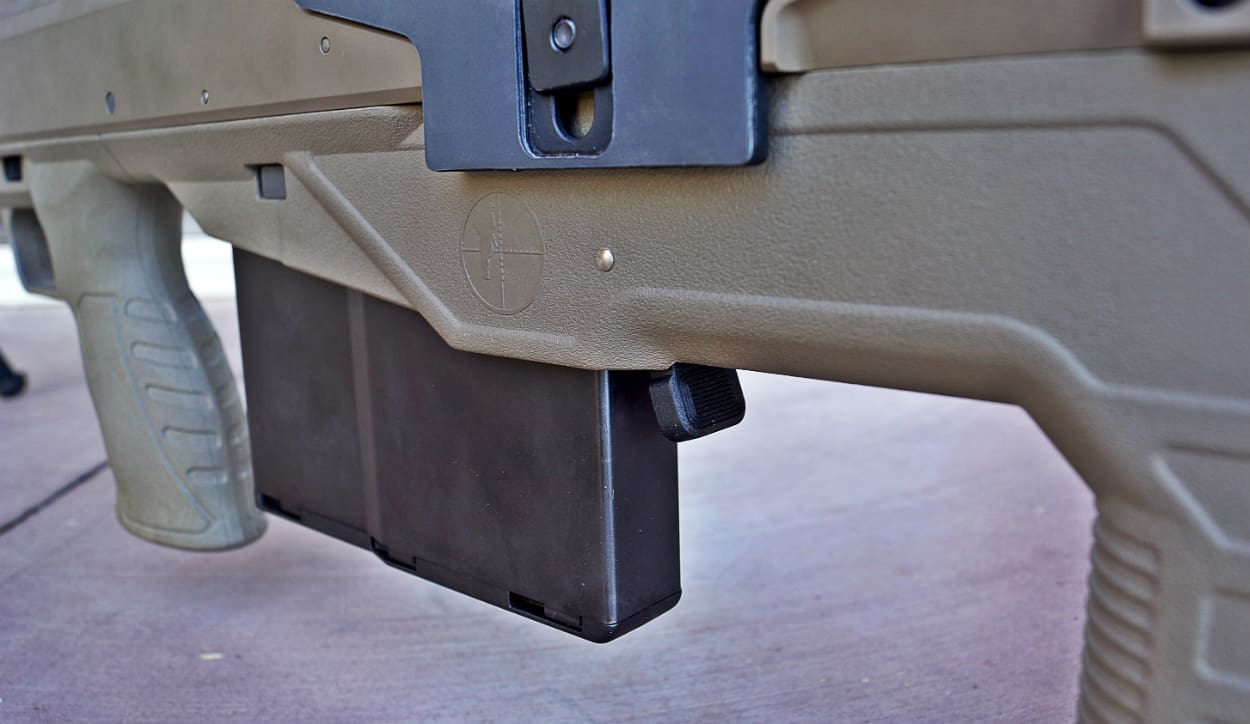
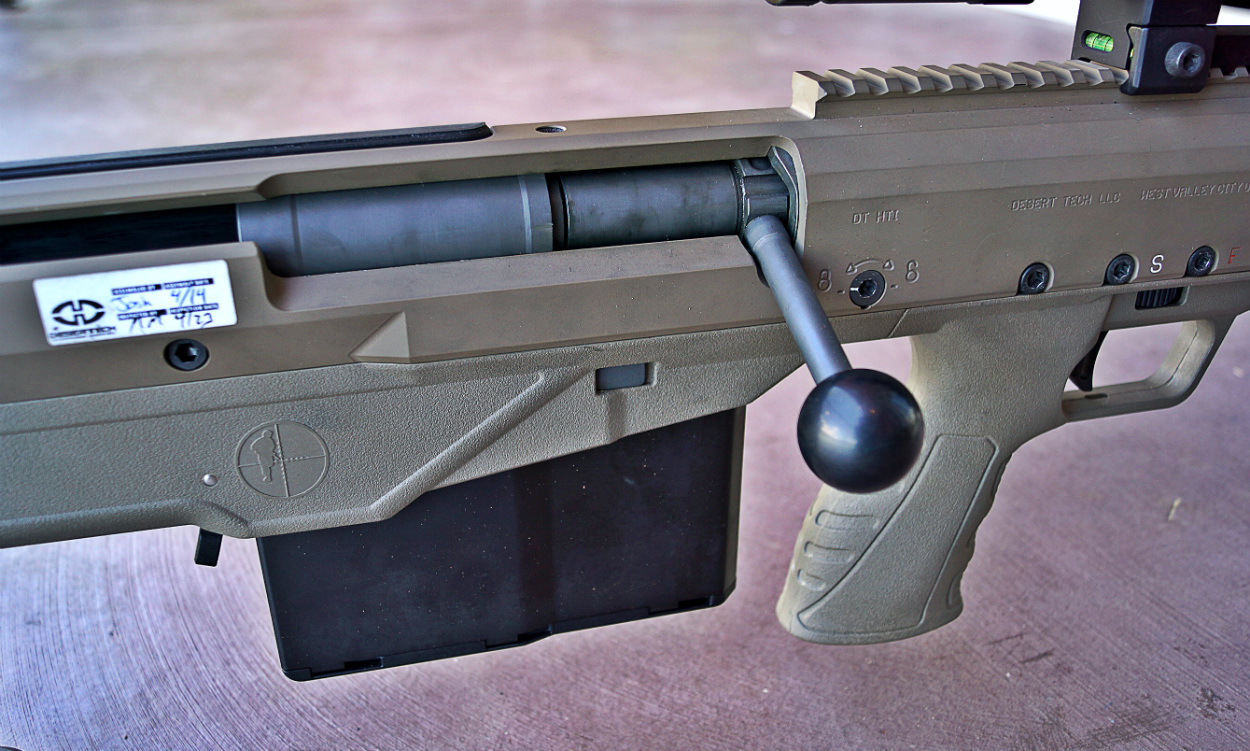
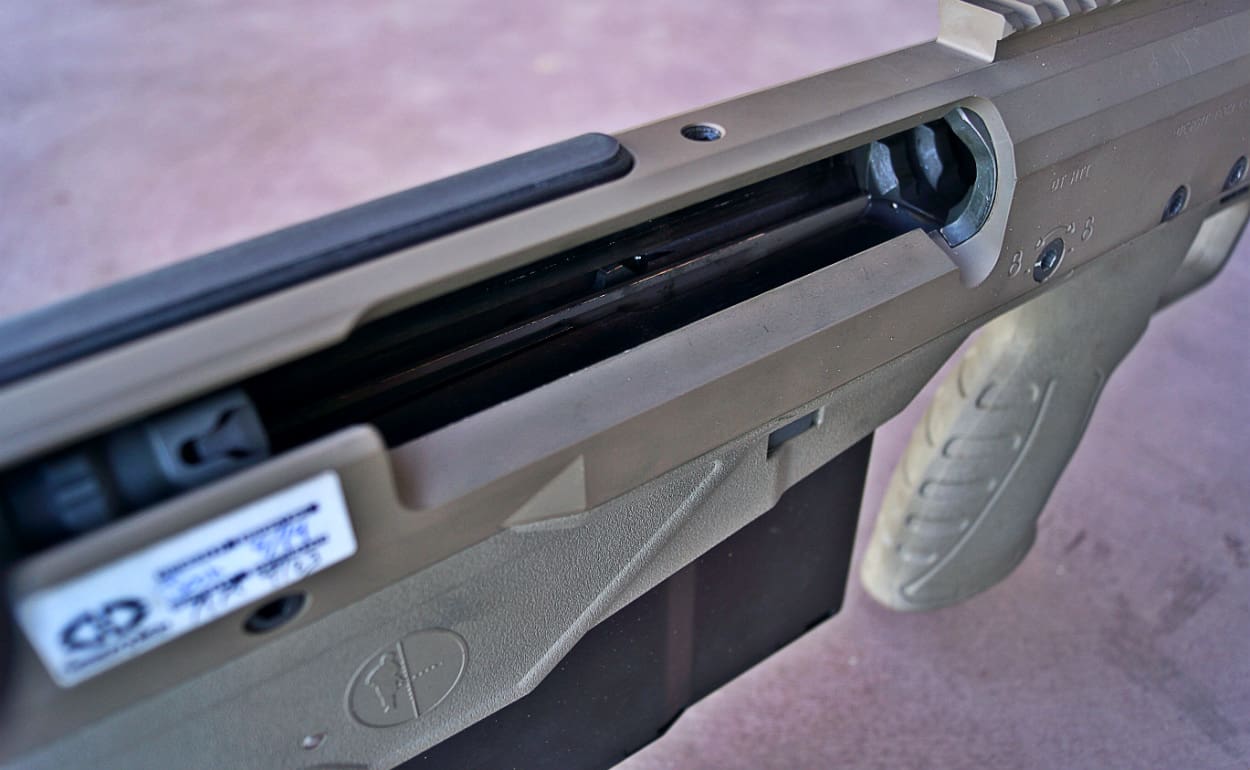
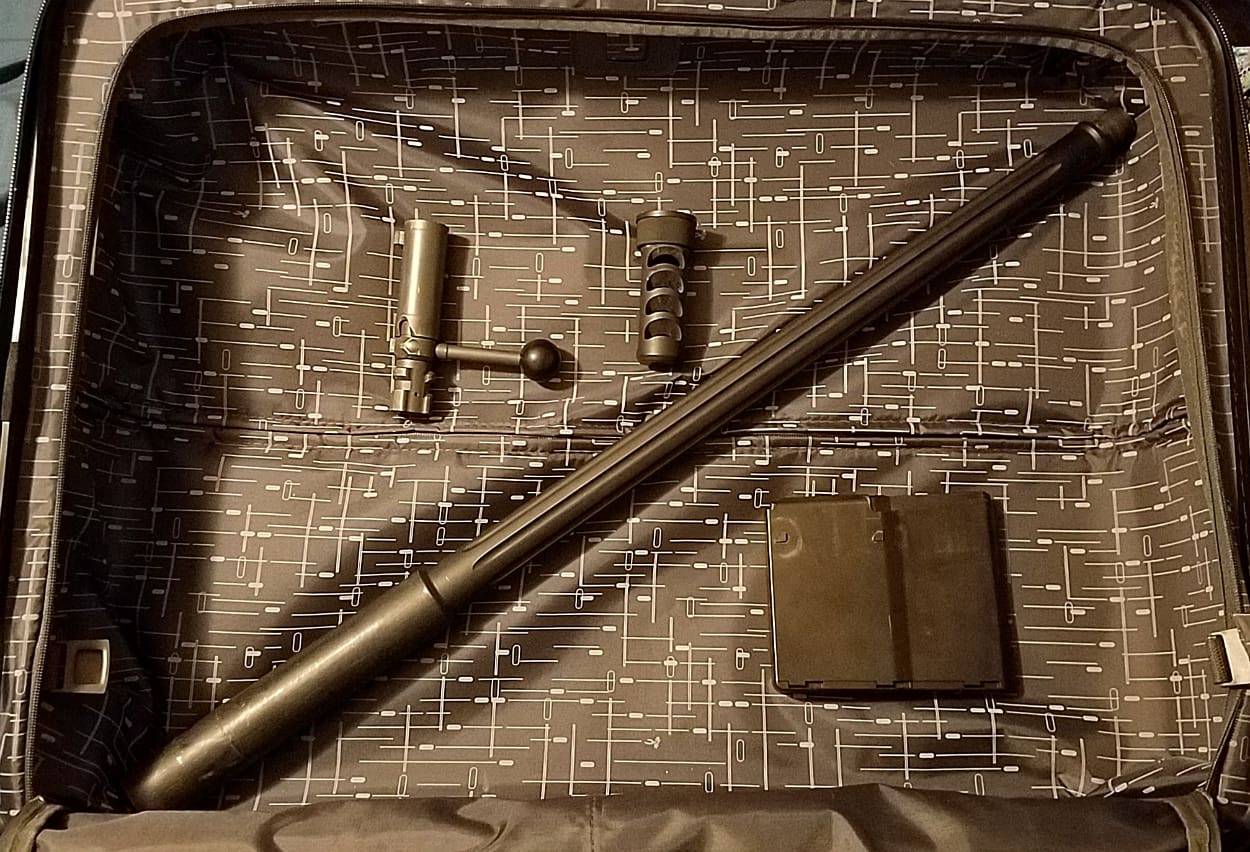
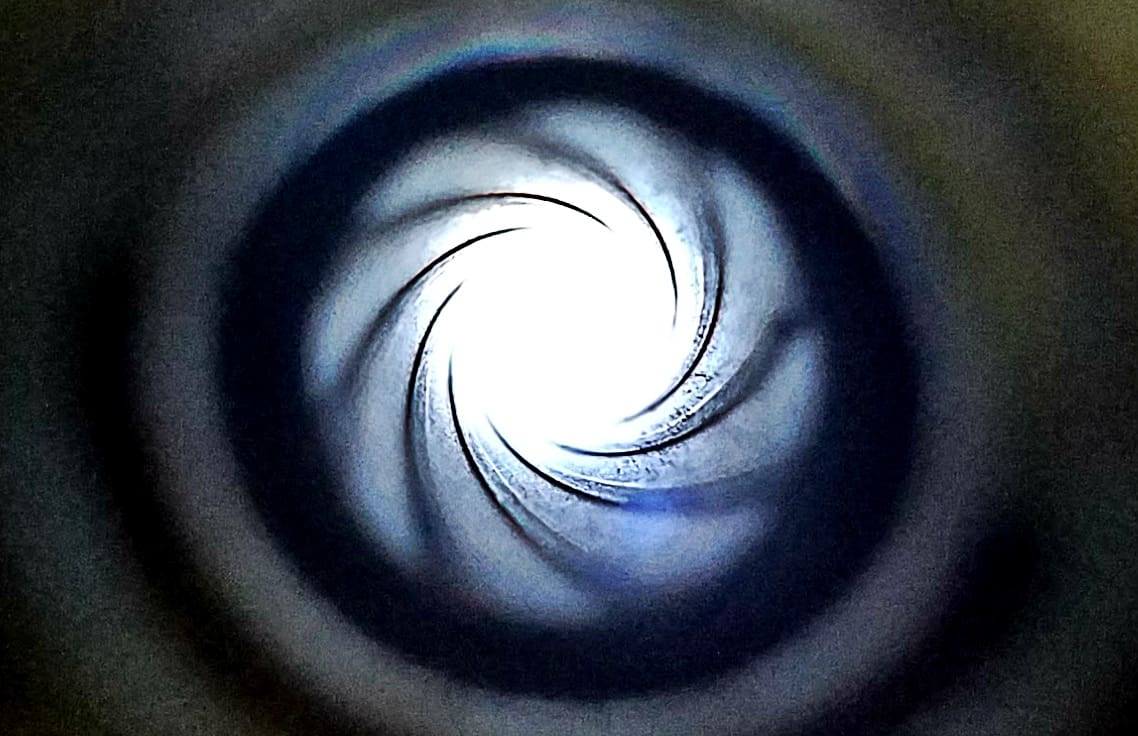
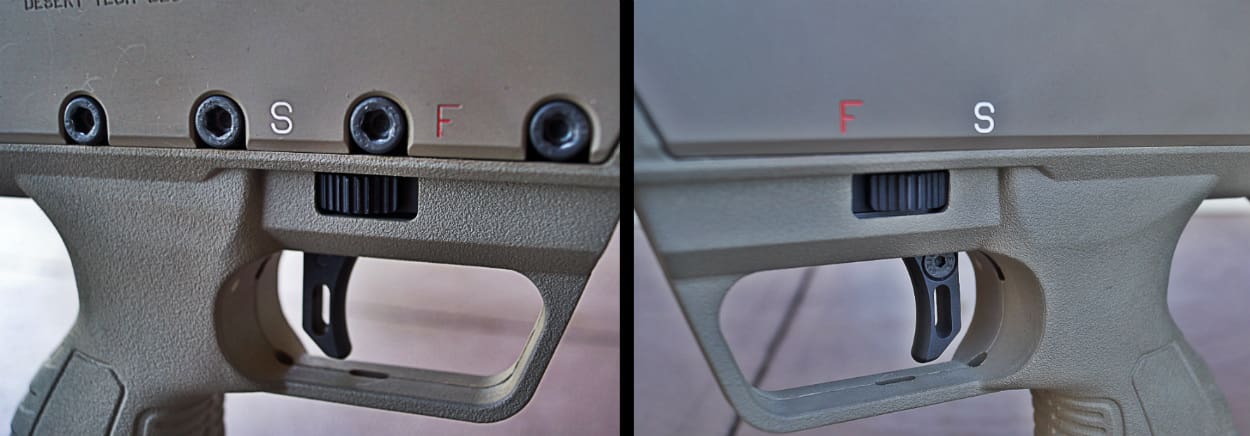
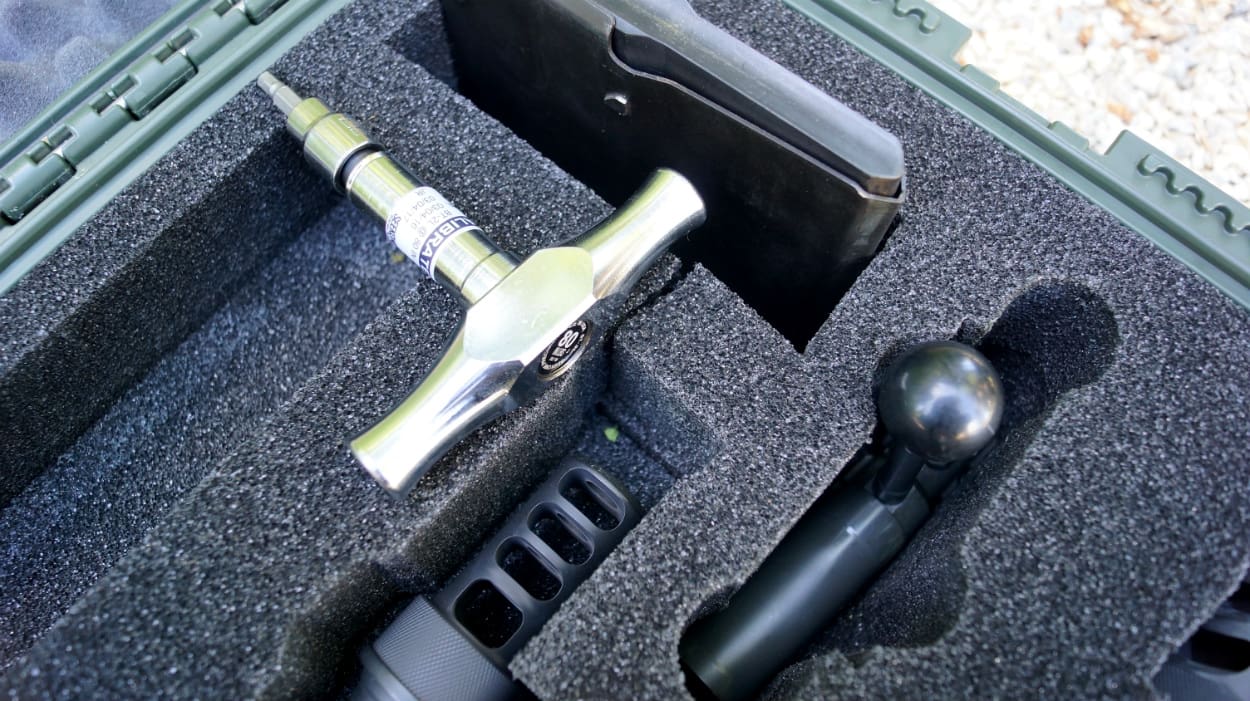
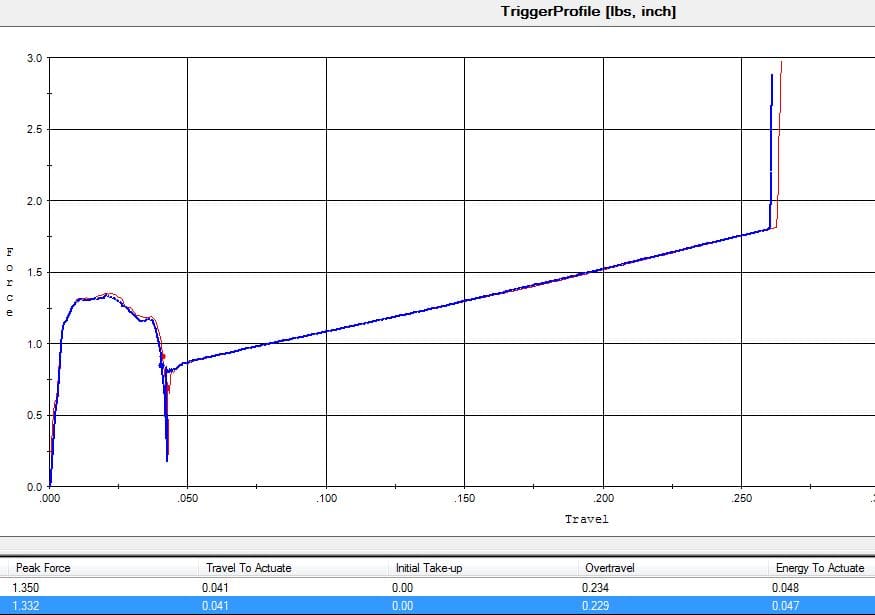
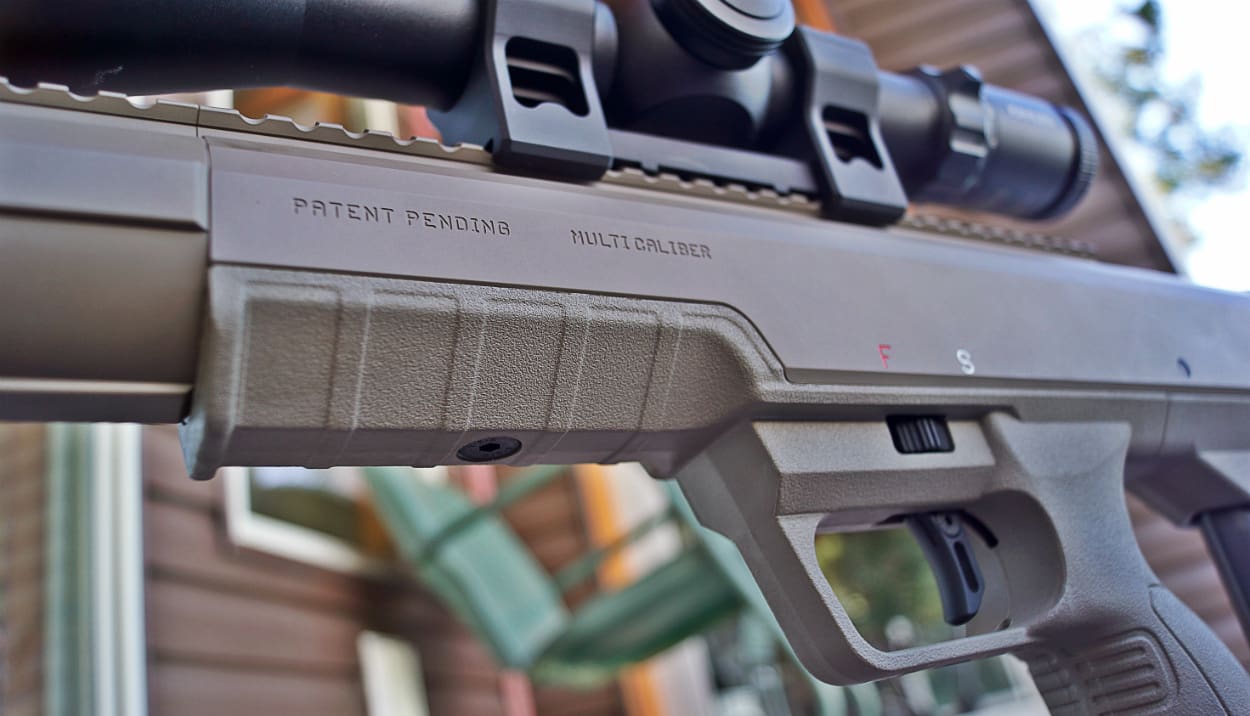
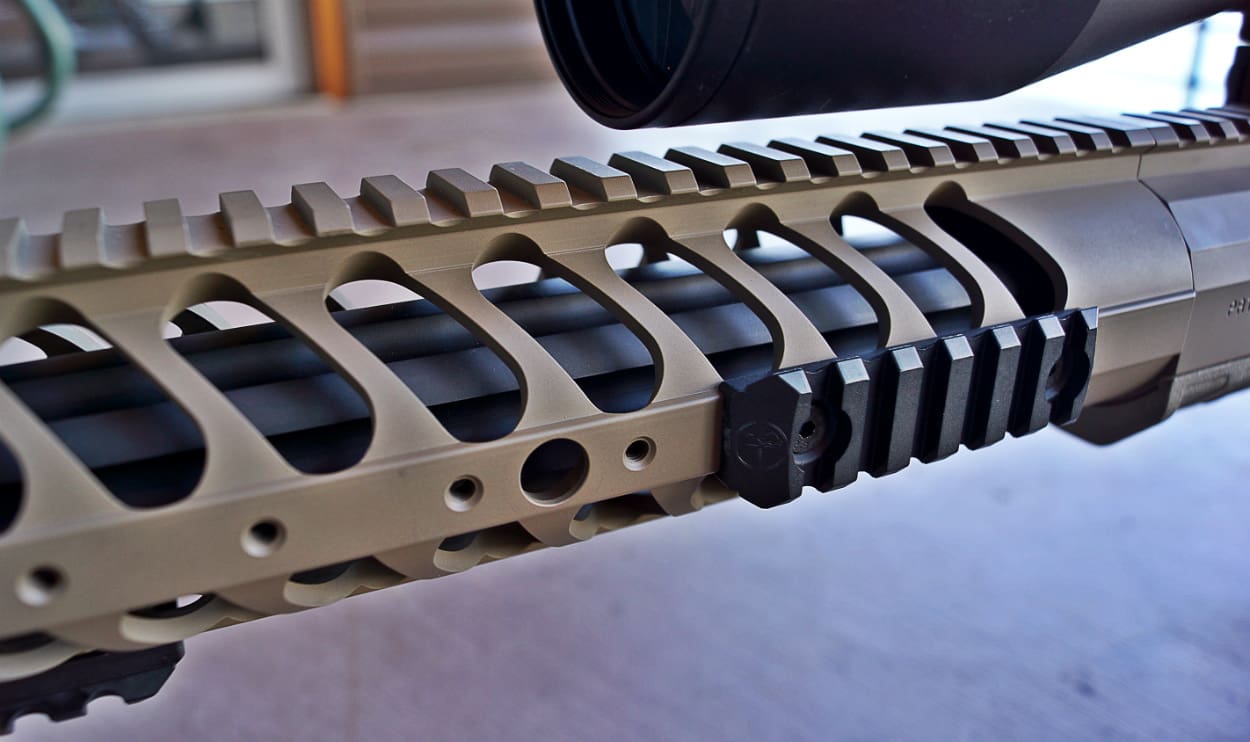
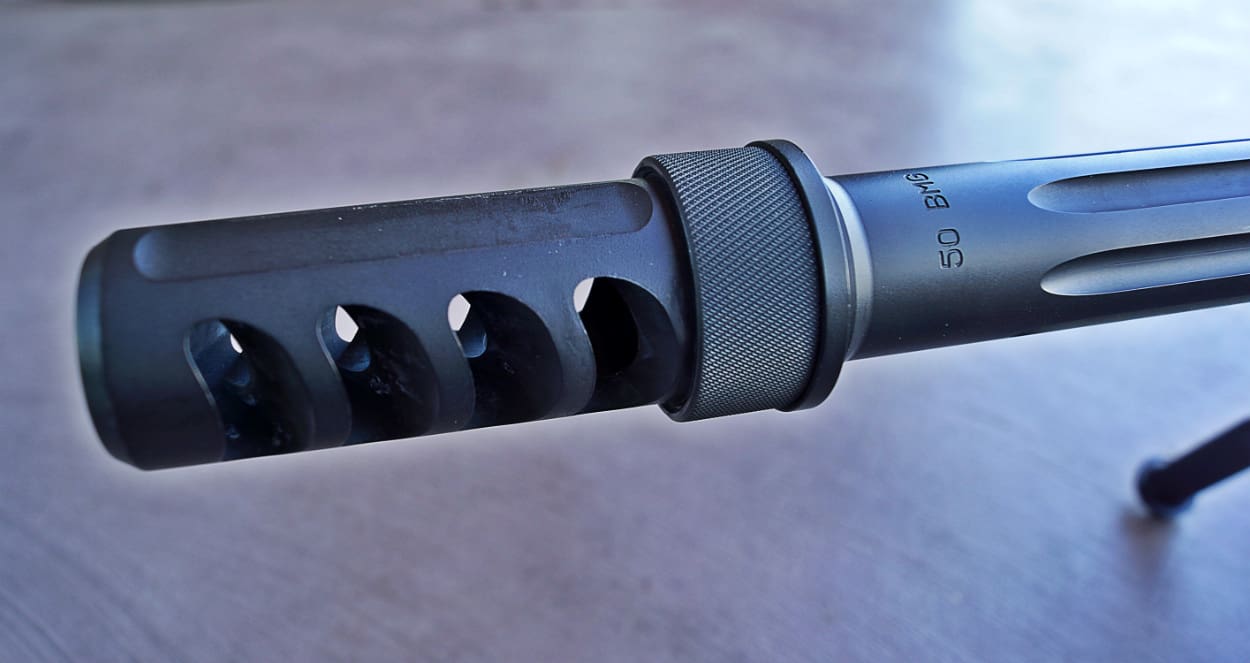


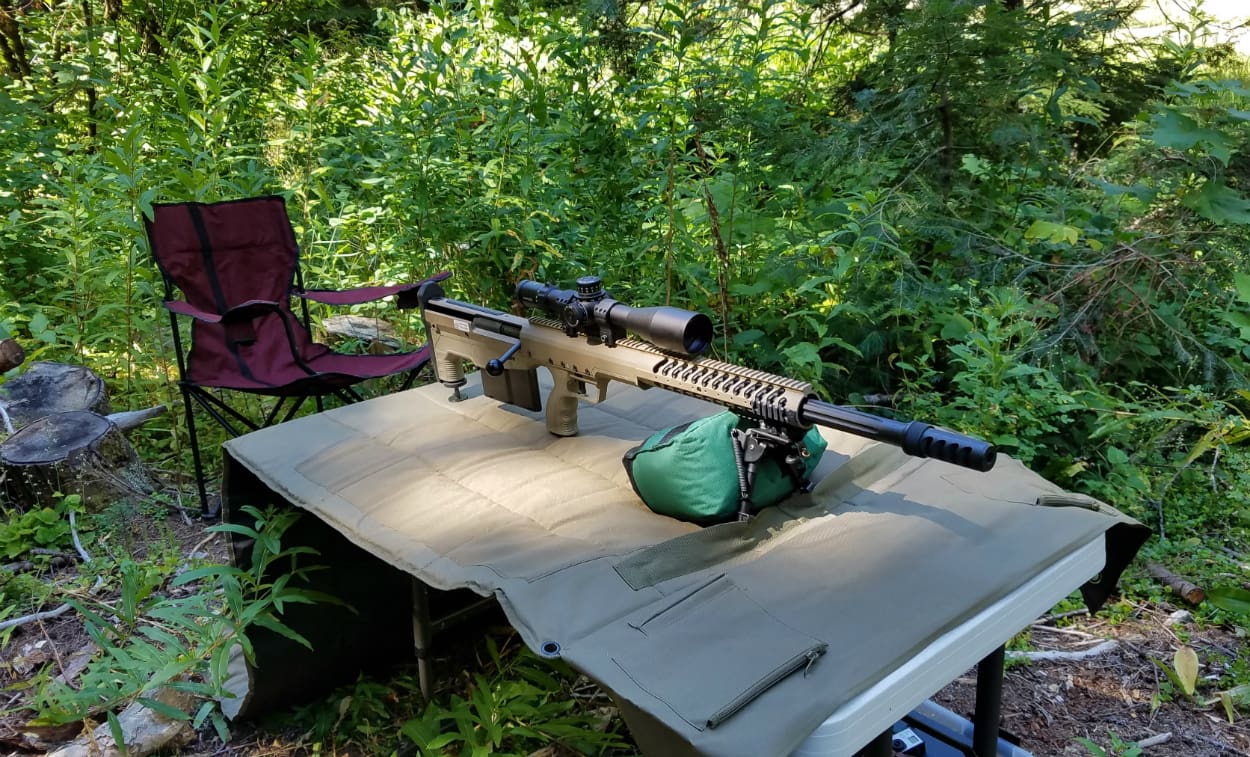
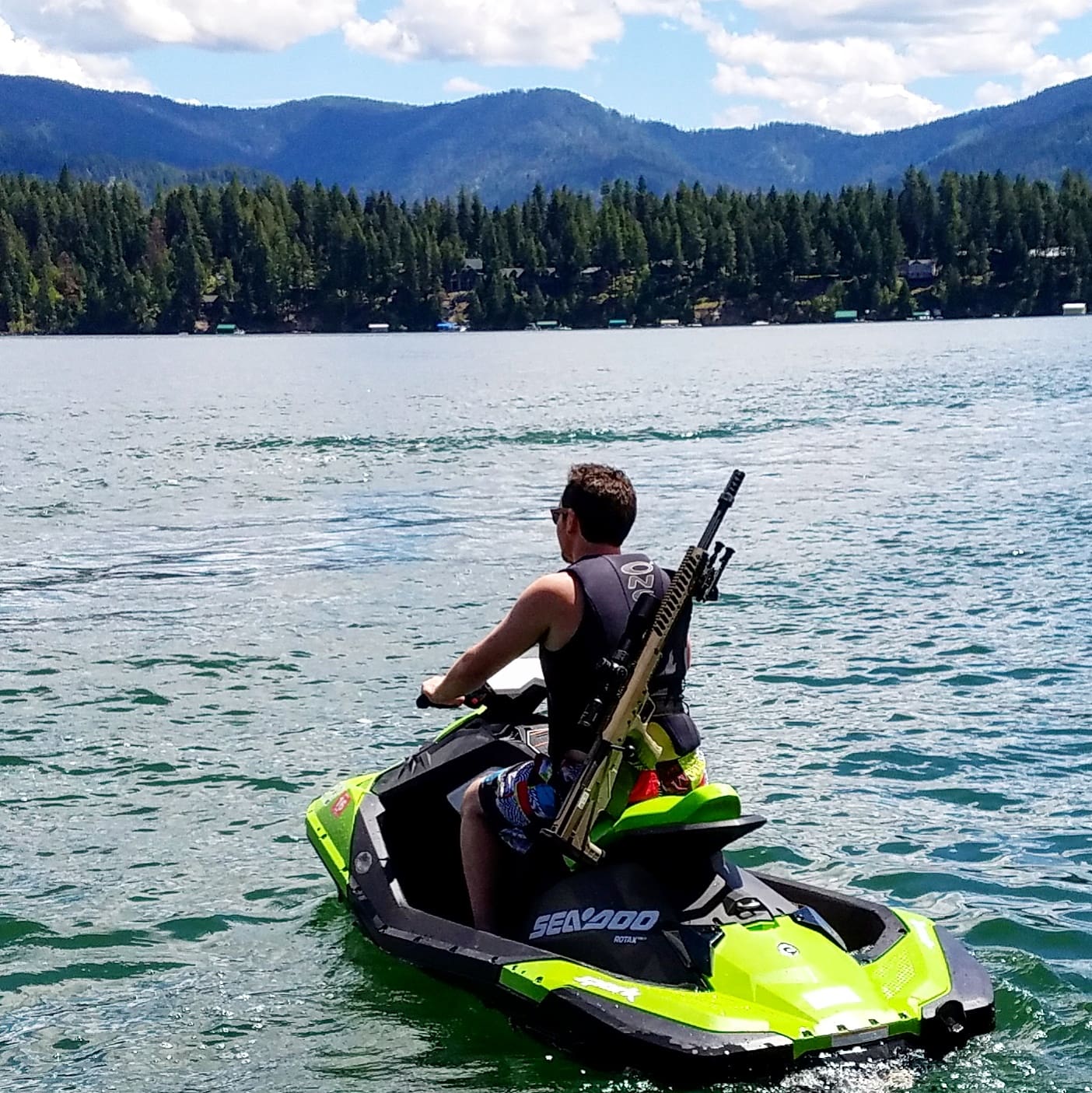
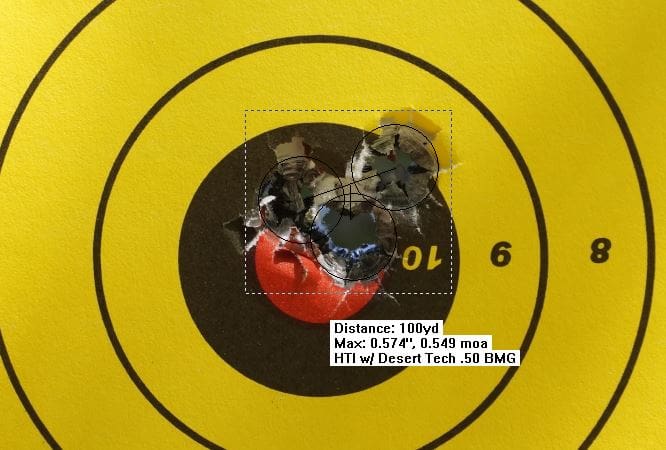
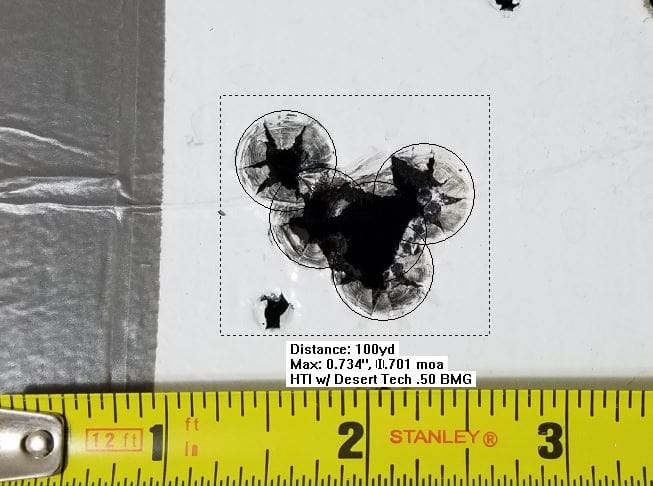
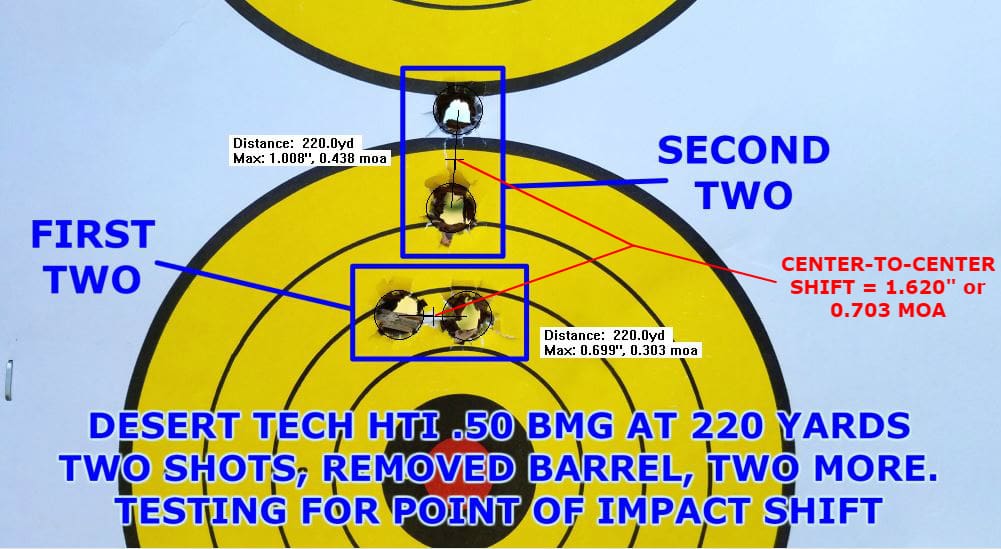
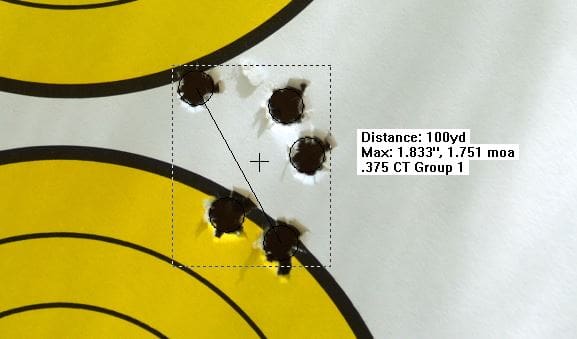
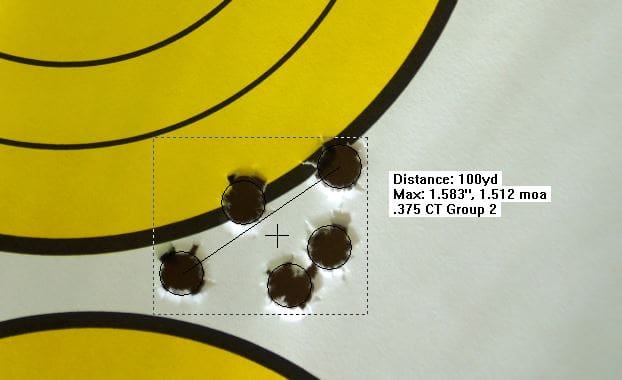
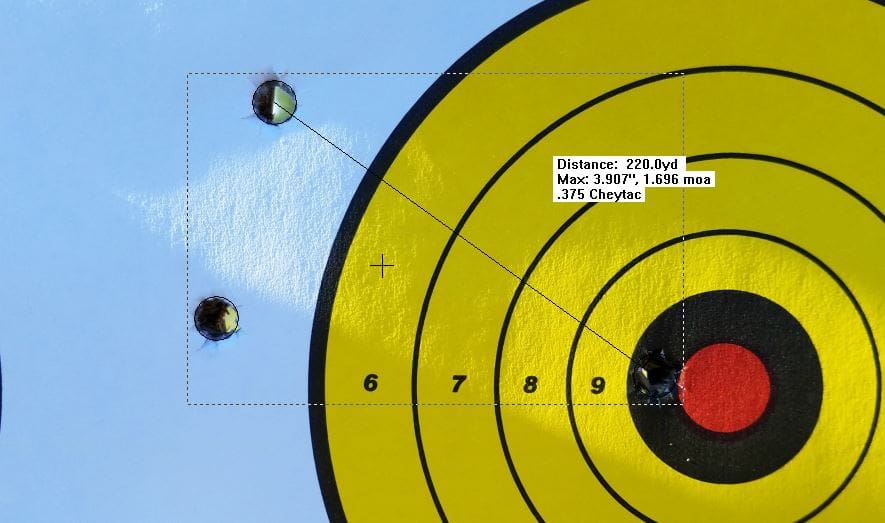




I love this gun.Their .338 lapua is a dream gun of mine but sadly where I live (SD) most ranges ban the use of .50. If I lived in the south west where I could reach out to 2500 yds I could see the use.
Most times I am pretty down on ranges with silly rules, but I have to give them some slack when you want to shoot a gun which may blow out the back of the building, or, if outdoors, end up a few miles beyond the end of their property. This thing is clearly the Chuck Norris of firearms.
As much as it costs, I would have had the life jacket on the gun during the jet ski excursion. 😀
Damn shame I don’t have the disposable to spend on the Dtech stuff. Been a fan for awhile.
I trust those Sandstorm slings not to let me down 😉 …and I’m SCUBA certified 😛 …
But yeah, the rifle, caliber conversion, Kahles scope, and Harris bipod, all in a wheeled Pelican case, adds up to like $13,000. It’s a little absurd to have that plus a couple other rifles, handguns, and a few suppressors in the back of my “woods truck,” which is worth maybe $2,500.
I know the feeling well.
Going out shooting on the dry lake bed, with 5k of guns and gear in the back of a 2k bronco….
Not a bad price!
Jeez, I get that “world ended” feeling when I shoot 12ga slugs. I can only imagine shooting this.
“Despite its bullpup configuration, it sports a spectacular trigger.”
What about a bullpup configuration degrades its trigger?
BTW – What an *adorable* child! Are you certain you’re the father? 🙂
There’s a linkage of some length between the actual trigger shoe and the fire control group. In some guns it’s really long. If the gun is pushing that linkage rather than pulling it, there’s often flex that leads to a squishy trigger feel. Even on guns that pull the linkage (e.g. Tavor) the triggers are often heavy. I dunno, there are easy ways to get around this — clearly DT has — but in general due to the separation of the part that you actually pull on with your finger and the guts of the FCG where the hammer and such are housed, there’s friction and linkages and complications that tend to result in a heavy, squishy, rough trigger pull and poor feel and consistency and such in general.
I’m at least 90% sure 😛 …also, “free .50 cal rides!”…
Kids nowadays get all the cool toys to ride on. I had a block of wood that I would pretend was a tractor.
” If the gun is pushing that linkage rather than pulling it, there’s often flex that leads to a squishy trigger feel.”
OK, that makes sense.
It’s a lot like high-performance aerobatic aircraft then. They tend to use carbon fiber tube ‘pushrods’ and bellcranks instead of cables on the control surfaces, to give them a more crisp / precise feel to the stick…
Nice gun, great review and I got 5 bucks that says the first picture will be the focal point of some anit-gunner’s outrage.
Liberal heads will explode when they see that first picture.
https://m.popkey.co/564181/A5gvm.gif
OMG, a CHILD, sitting on a GUN!!!!
I have the vapors. Someone pass a cold compress.
Yah. In response to you and to Klaus’ comment just above yours, I posted that photo on our Instagram account (https://www.instagram.com/guntruth/) a few months ago and there were some anti-gunner, negative comments made on it. I think because I used a non-firearm-specific hashtag (#HopOn) so it likely showed up in the feeds of people not wanting/expecting/liking to see gun stuff.
In response to anyone who has a problem with a toddler sitting on that gun, which, without the bolt in it, is nothing but a metal tube and is LESS dangerous than the little balance bike she rides around on daily (always and only with a helmet, of course), you may want to inspect your “common sense” for Grand Canyon-sized gaps.
You guys have a review of the AX50 on here too. Between the two guns would you prefer the Desert Tech or AI if money wasn’t a factor?
Jeremy, nicely done again. One minor point…
“Despite its unimpressive size it does seem to work effectively, feeling soft when squished by over 12,000 ft-lbs.”
There is a vasty difference between muzzle energy and felt recoil. Were you subjected to 12,000 lbs felt recoil, we’d be having a farewell party for whatever they could find of your shoulder, or more likely, all of you.
Here’s the math in a nutshell from wiki…
https://en.wikipedia.org/wiki/Recoil
Yeah. In the beginning of the article I made sure to specify “…of muzzle energy” the first time it came up, and after that expected it was assumed for all of the ammo stats listed in ft-lbs that followed. The vasty difference is understood 🙂
Just here for the pedantry….
🙂
Cool gun! An acccurate .50 makes a whole lot more sense to me than an inaccurate .375 Cheytac.
It would be a perfect gun if it had some cant/MOA built into the top rail, like every other company that makes serious long range rifles. Now you’re stuck buying a mount with a huge amount of MOA built into it. Also if the handguard/rail was easily removable to transport/breakdown the gun it would be a plus. Great review, thanks.
I think the issue with putting the cant in the built in rail on the rifle would be with the fact that they use the same chassis for multiple calibers. I’m not sure you’d want the same amount of cant for .416 Barrett as you would for, say, .375 or .408 CT. But I also haven’t done the math on it. The caliber options for the rifle may all fall in the same “10 MOA window”, as it were.
You guys have a review of the AI AX50 on here too. Between the two guns would you prefer the Desert Tech or AI? (If money wasn’t a factor and it was only going to be .50 bmg)
You shouldn’t hold the accuracy of the .375 CT at 100 yards as a failing of the rifle. That caliber is still stabilizing at 300 yards. It’s a weird projectile with the level of energy and spin that it has. I’ve seen groups between 1 to 1.5 MOA at 100 yards but then a 4 inch group at 800 yards. Because of this Desert Tech doesn’t claim 0.5 or better at 100 yards with the HTI due to the crazy physics going on with the big bore calibers. They only make the 0.5 MOA claim with the SRS-A1 and Covert rifles while the HTI claim is “The HTI maintains exceptional accuracy because of its match-grade (free-floated) barrels, chambers and crowns, a high-quality match trigger, and solid return-to-zero barrel mounting system.” That’s directly off the Desert Tech website. No mention of a 0.5 guarantee for the HTI.
I just ordered this and looking for ideas on the best bipod and best scope set up for the HTI 50. Any suggestions would be greatly appreciated.
Thanks
Josh
Josh did you ever get yours?
Yes, I did end up getting it and really like it. I ended up putting on a custom allied precision bipod. http://www.alliedprecisionarms.com/
I went with the Valdada 6-24×50 35mm Tactical Scope and mount.
It is very fun to shoot.
Game changer, hard target engagement with a Barrett means hi we’re here on the hillside a mile to the left. Now your the Apple of my eye for the 20mm incoming. Time in get to next building or hill top. Your choice taking your great dane to the groomers in her Miata or taking your Jack Russell. No more tattoos from a red hot barrett flutes though your gloves………game changing accuracy to boot
Silly question I’m sure but I can’t for the life of me find a company to do a laser cut on hard foam for me like what you have in the pics. I have the HTI 50. Where did you get your case/foam?
If you love to wear polyester fabric jackets? so check Salt N Pepa Jacket which is a most selling outfit in our store, Shop now and get amazing discounts and offers.
Comments are closed.